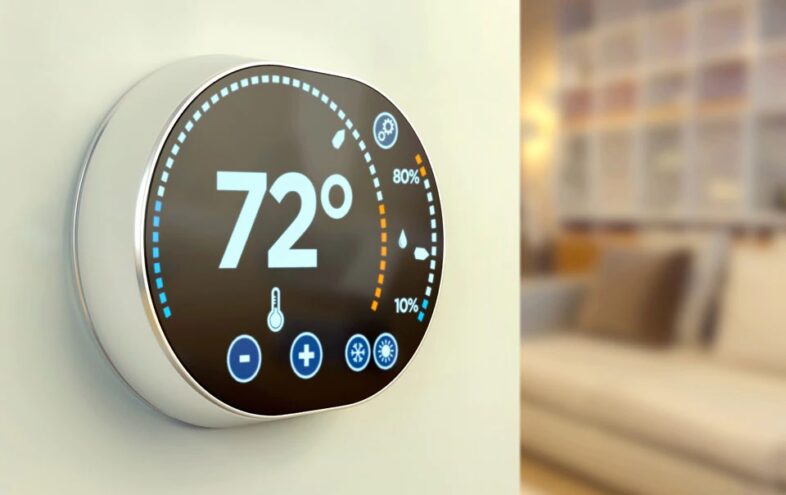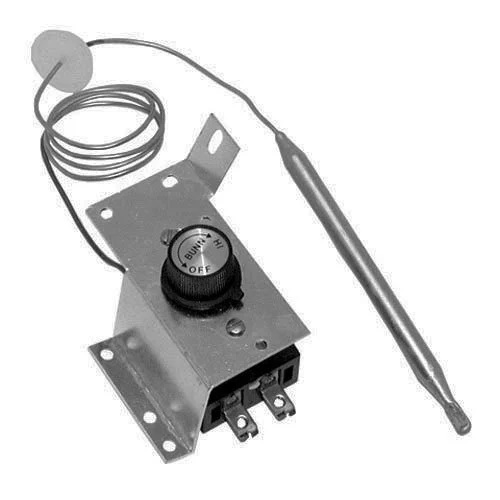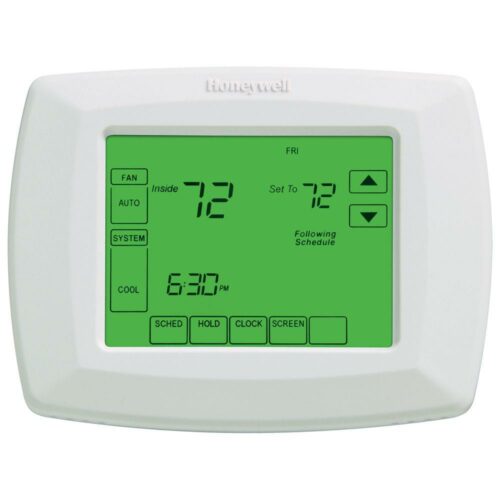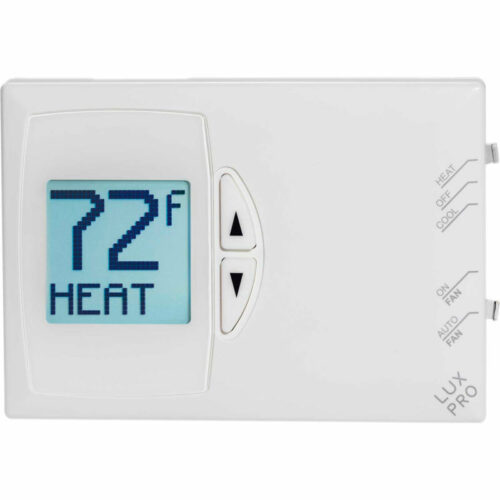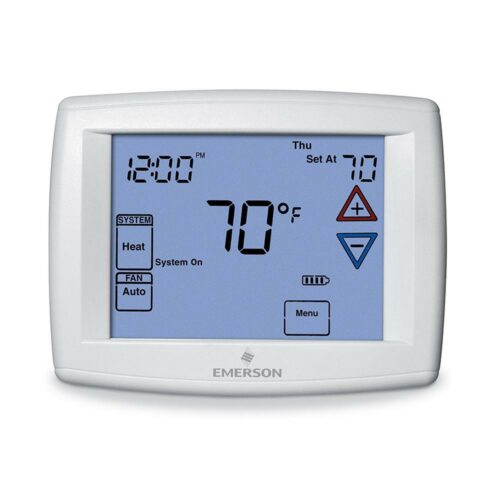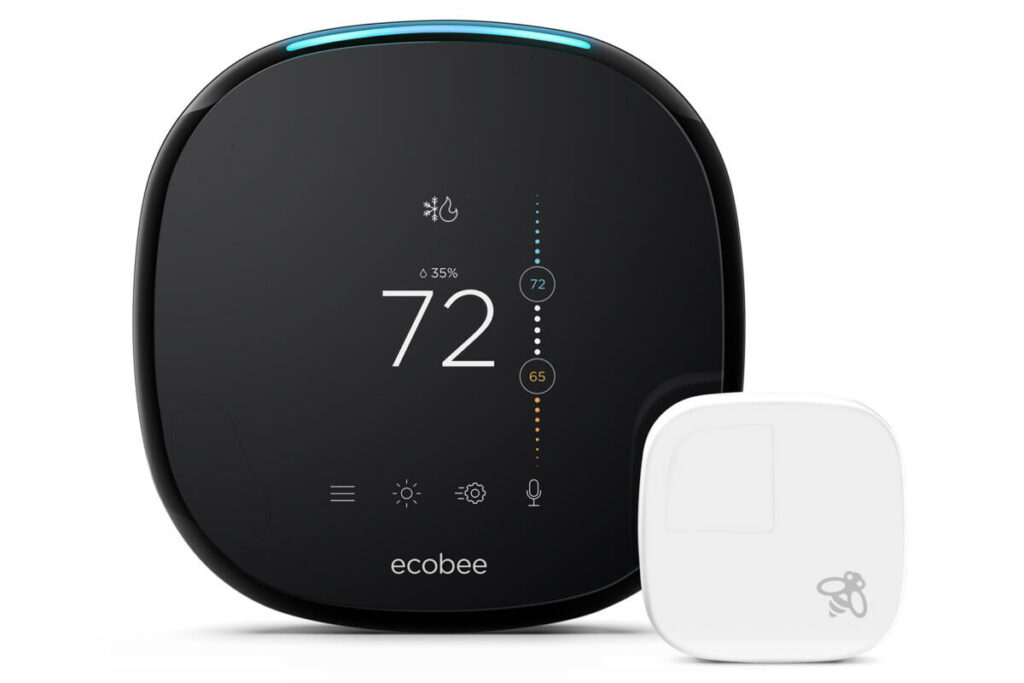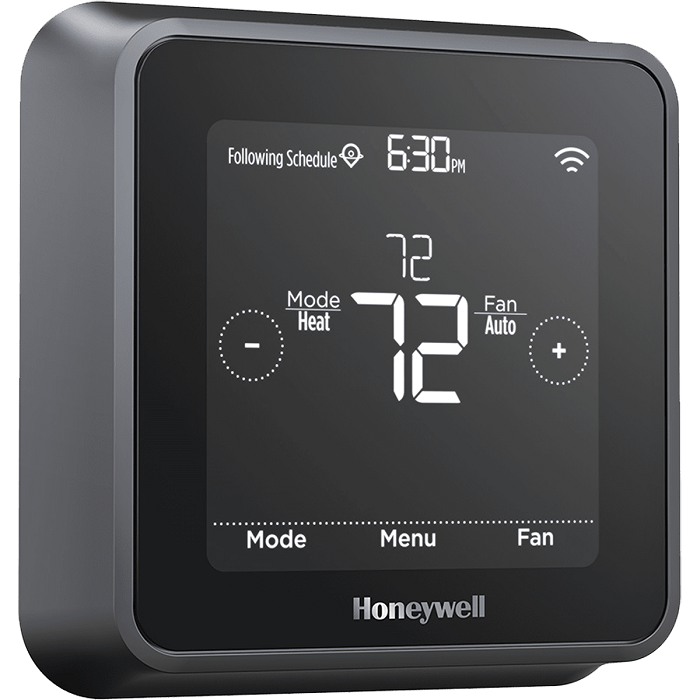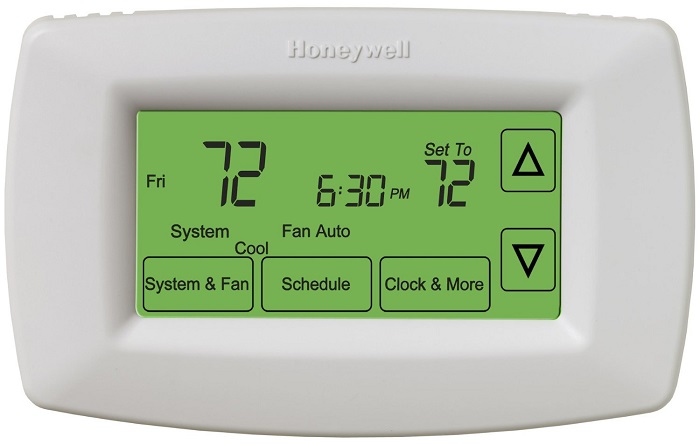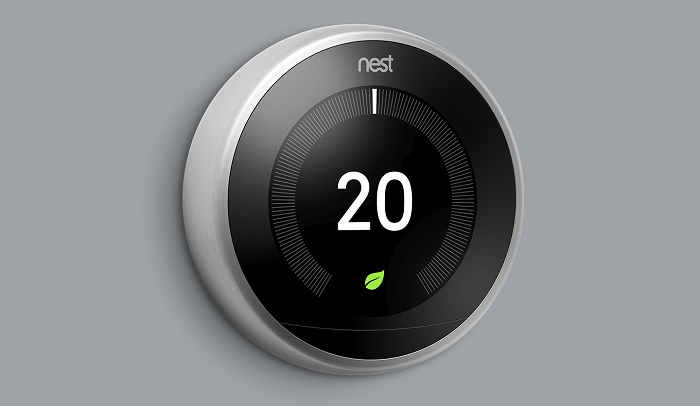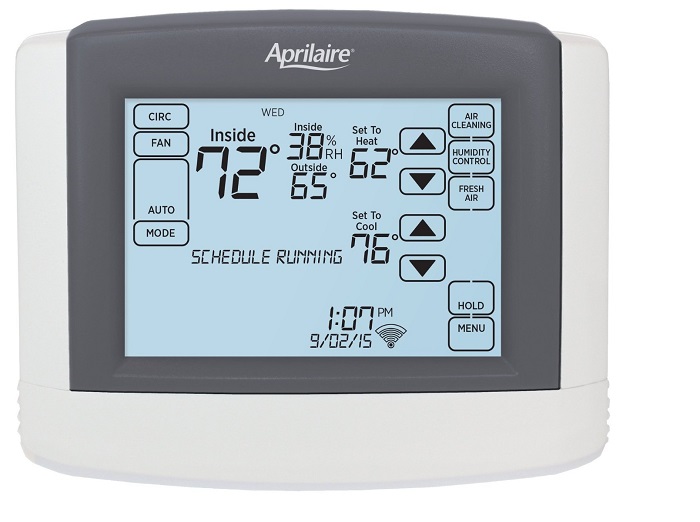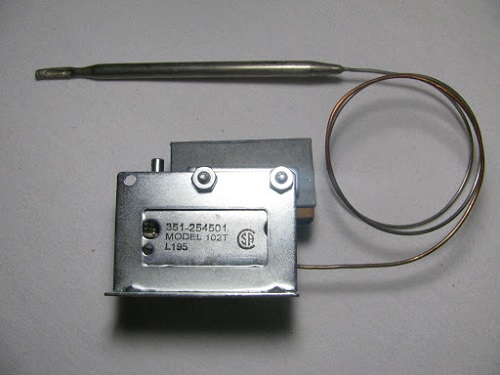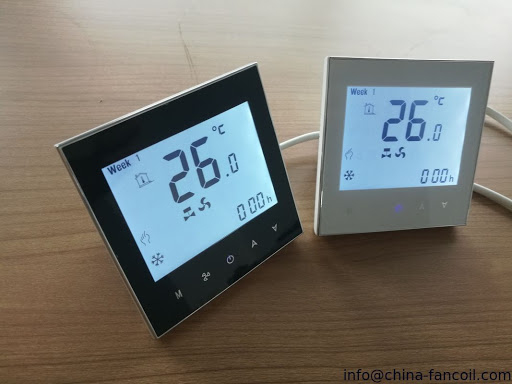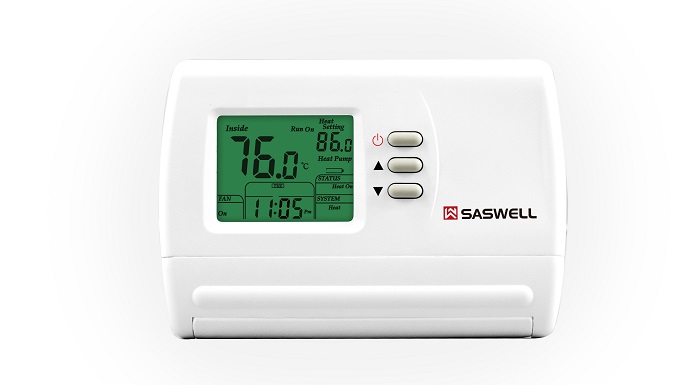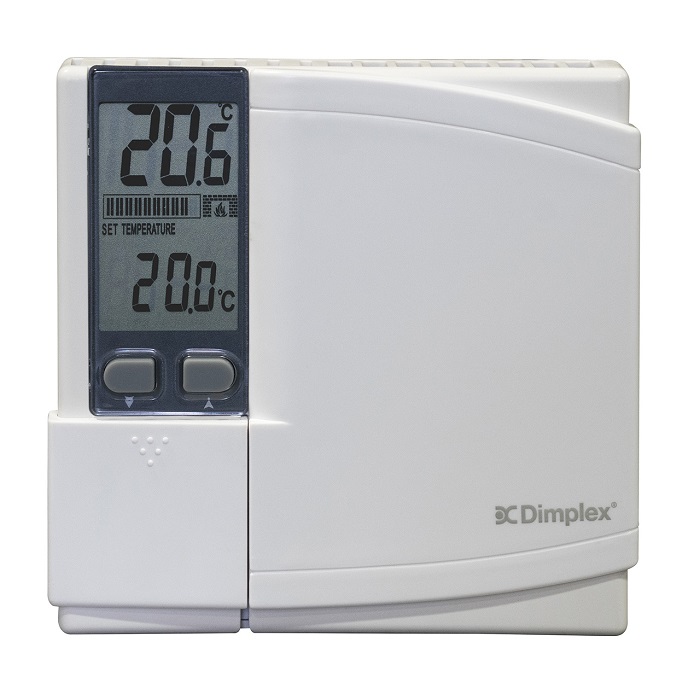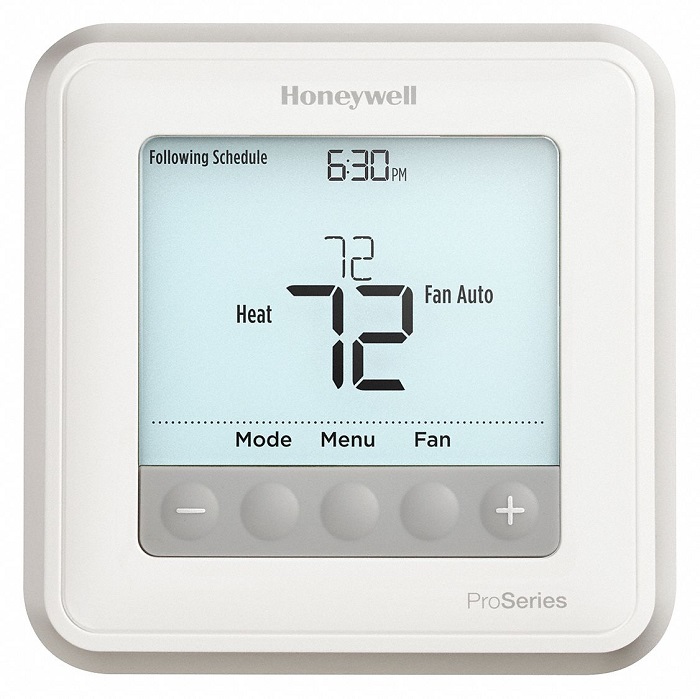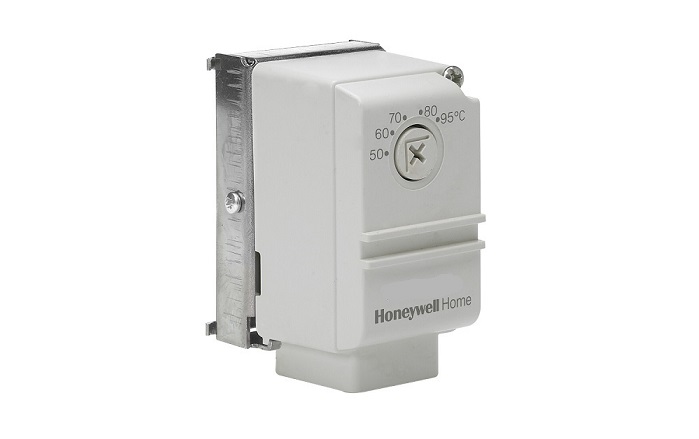There are different types of thermostats that are categorized based on their working principle or whether they can be programmed or not. Long story short, from a working principle point of view, there are the mechanical type and the digital type. From their programmability point of view, there are the programmable and the non-programmable type, as well as the smart type, all of which will be discussed in the following in more detail.
Types of Thermostats: Based on Working Principle
Mechanical Thermostats
Mechanical thermostats are the older version. They heat and cool your water by using principles of thermal expansion that generate electricity using metal strips or gas. This expansion moves discs that activate the mechanism (you can see how they work here).
The later gas models use the gas’s expansion and contraction to operate metal discs that change the thermostat’s settings. This allows them to react more quickly to changes in temperature, saving you money by not running when the system isn’t needed.
Pros
- Their installation is cheaper
- Due to their moving parts, they are more resistant to power outages and fluctuations
- They are more familiar to most people and much easier to use
- Thermostat troubleshooting is quite easy with a simple device
Cons
- A longer delay in temperature changes
- Fewer options when it comes to controlling and customization
- Expensive maintenance
Digital Thermostats
By contrast, digital thermostats simply use modern technology to sense the temperature of the room and use that information to turn on the heating or cooling system. This is a more direct, and therefore more efficient, means of controlling the circuits in the thermostat that operate your HVAC.
The negligible computing power needed in most digital thermostats makes them basic but effective managers of your house’s temperature. These models are getting smarter, however, as discussed below, and are quickly getting more options and capabilities when it comes to managing your settings.
Pros
- They offer many more options in terms of temperature control
- They are programmable to your specifications
- They are more energy-efficient
- Their response to temperature changes is much more immediate
Cons
- They take longer and cost more to install
Types of Thermostats: Based on Programmability
Non-Programmable Thermostats
Non-programmable thermostats have no pre-settings or smart technology at all. They can only be manually set and adjusted using their physical interface.
There’s nothing wrong with this if you or at least one person is always home. However, since you can’t change the settings when you’re away at work or asleep at night, you can expect some high power bills, at least until you’ve gotten used to the responsibility of setting your temperature.
Pros
- They are generally cheaper to install
- They are easy to use with clear, traditional interfaces
- They are reliable in the settings you prefer
Cons
- They cannot be programmed: not ideal for people who are often away from home
- No efficiency features, though they tend to be cost-effective
Programmable Thermostats
These thermostats can be programmed for your temperature preferences on a daily or weekly basis and for the season of the year. This allows you to save money by saving on heating or cooling when you know that no one will be home. You can set it on a more average temperature during business or school hours, for instance.
These thermostats are most useful for residents of areas that experience drastic temperature changes. The US South, for instance, experiences hot days and cold nights for much of the year. You can program this type of digital thermostat for both of those eventualities separately.
Some models now even have smartphone compatibility. Using a basic Wi-Fi connection, you can change your thermostat’s settings right from your phone or tablet.
Pros
- More opportunities for customization
- Perfect for those in areas with drastic temperature changes
- The possibility of Wi-fi functionality
Cons
- More expensive than non-programmable alternatives
Smart Thermostats
These are the latest models in thermostat technology. They use advanced learning algorithms to automatically adjust the temperature of your house to suit your preferences.
This means that after you set the temperature a certain way enough times, a smart thermostat will automatically program that in as your pattern. This way, you don’t have to worry about racking up your utility bill because you forgot to set the thermostat for the night, for a business trip, or for a busy workday.
Most come with Wi-fi connectivity that allows you to change the temperature with your phone or tablet for easy access to your settings.
Pros
- Smart technology promotes customization
- Learning algorithms provide a convenient, automatic helper when it comes to setting the thermostat for different times of the day, week, or year
- Wi-fi connectivity is convenient
Cons
- These are the most expensive models you can buy
Types of Thermostats: Based on Innovation
Wi-Fi Thermostat
Wi-Fi in this case means that the device can get connected to a wireless network and be accessed and controlled through it. What that means is that the device can be accessed and adjusted remotely, hence the convenience of total control even when no physically next to the thermostat.
Pros
- Wireless thermostats give you the freedom to access and control it anywhere, even if you aren’t in the same building it is installed.
- give you the option of changing pre-set values on a running programmed routine.
- It is highly economical and comes with lower utility bills in the long run.
Cons
- A wireless thermostat is very pricey.
Touch Screen Thermostat
As the name suggests, these are the kind of thermostats with no hard buttons for operation, but instead have a touch-sensitive display, much like that of smartphones. Settings are made via touching the options visible on the screen and can sometimes require several sequences of touching before getting a particular setting set.
Pros
- Since it does not feature buttons, there are lower chances of someone accidentally hitting a button.
- It makes the process of programming easier and quicker.
Cons
- Not all touchscreen models are made to comfortably accommodate people with large fingers.
- Touchscreen thermostats may also have a complicated interface, requiring some effort and patience for novice users to learn all the settings.
Learning Thermostat
This is the most recent invention in thermostat technology. A learning thermostat has all the benefits of programmable thermostats, except that it only requires manual programming for the first few times you use it. Afterward, it can predict your preferences, by which time it will start to set programs automatically.
A learning thermostat can connect to a wireless network, which allows you to set, monitor, and manage it remotely from a smartphone or computer. This thermostat will only work efficiently for people with consistent or predictable schedules. Without consistency, it can’t learn your preferences effectively.
Communicating Thermostat
Recently, many high-end thermostats feature a communication system. The communicating thermostat lets you set and monitor programs simply by talking to it. It has advanced features that go beyond other types of thermostat devices, such as troubleshooting assistance, adjusting features, and furnace settings directly from the thermostat and maintenance warnings.
Other Types of Thermostats
Bulb Thermostat
These have a single/ double-stage, heating or cooling temperature controller which uses a liquid-filled sensing element and also has a capillary. It contains concealed set point-deals with regulating differential and it will switch line voltages. This unit uses 120 VAC or 240 VAC to operate. These are less common than the other types for home use.
Fan Coil / Proportional Thermostat
Fan-coil/ proportional thermostats can work with 24v DC, 120v and 240v AC systems. They are designed for Building Automation systems and used in residential buildings. It can be used in both manual/ automatic modes to change the remote thermistor temperature sensor. They typically have the following features:
- Fan & system-switching models
- Remote sensor capability
- Control multiple fans
Heat-Pump Thermostat
These usually have a digital or multistage 7-day programmable/ non-programmable Proportional-Integral thermostat. These can be used to control a heat pump for both cooling/ heating applications. Different brands have diverse functions like fan switching with Internal or remote sensor capabilities. They tend to have a simple menu with around 10-20 configurable parameters to play with. Other features include:
- Three status LEDs (fan, heating & cooling)
- System switching (Off/ auto/ cooling/ heating)
- LCD
- Cycles per hour for cooling/ heating
- Fahrenheit/ Celsius Operation
- Engaging the set-points
- Supply voltage 20 to 25 VAC.
Note that many regular thermostats cannot be used with a Heat-Pump system.
Line-Voltage Thermostat
These are installed in series with heaters and it mostly runs on 120v or 240v AC mains power. They work in a way that current flows through the thermostat and into the heater. They use thick wires (2 or 4 wire) which are coming out from their back. As well as being used with regular systems, they are also used with electric heaters that draw a large amount of current and voltage.
Low-Voltage Thermostat
These thermostats are more efficient for controlling airflow. Because of this, low-voltage thermostats are used in central HVAC systems that use electricity, gas, and oil as well as water heating systems. Low-voltage thermostats allow you to accurately control the air current and make it easier to use programmable controls. Low-voltage thermostats operate on 24V to 50V, whereas line-voltage thermostats operate on 240V.
Low / High Limit Thermostat
These incorporate a vapor-charged sensing element. They are designed to transfer a set-point such that when the main contact opens, the auxiliary contact closes instantaneously. Important applications of Low/ high limit thermostats include the shutdown of a ventilation system and Building Automation Systems that indicate low/ high temperature. They’re not typically used in home systems.
So, now you know everything you needed to know about different types of thermostats. If you enjoy this article in Linquip, let us know what you think by leaving a reply in the comment section. We will be more than glad to have your viewpoint on the article. Is there any question we can help you with? Feel free to sign up on our website where our experts are prepared to provide you with the most professional advice.
Buy Equipment or Ask for a Service
By using Linquip RFQ Service, you can expect to receive quotations from various suppliers across multiple industries and regions.
Click Here to Request a Quotation From Suppliers and Service Providers
Read More on Linquip
- What is the Core Difference between Thermistor and RTD?
- Thermistor Resistance: How does it Calculate?
- Thermistor vs Thermocouple: Complete Comparison & Practical Selection Guide
- Types of Thermistors; A Fundamental Comparison Between Them
- What is a Thermistor and How Does it Work?
- A Good Look at Types of Thermostats
- A Quick Look at Types of Proximity Sensors
- A Brief Look at Types of Multimeters

